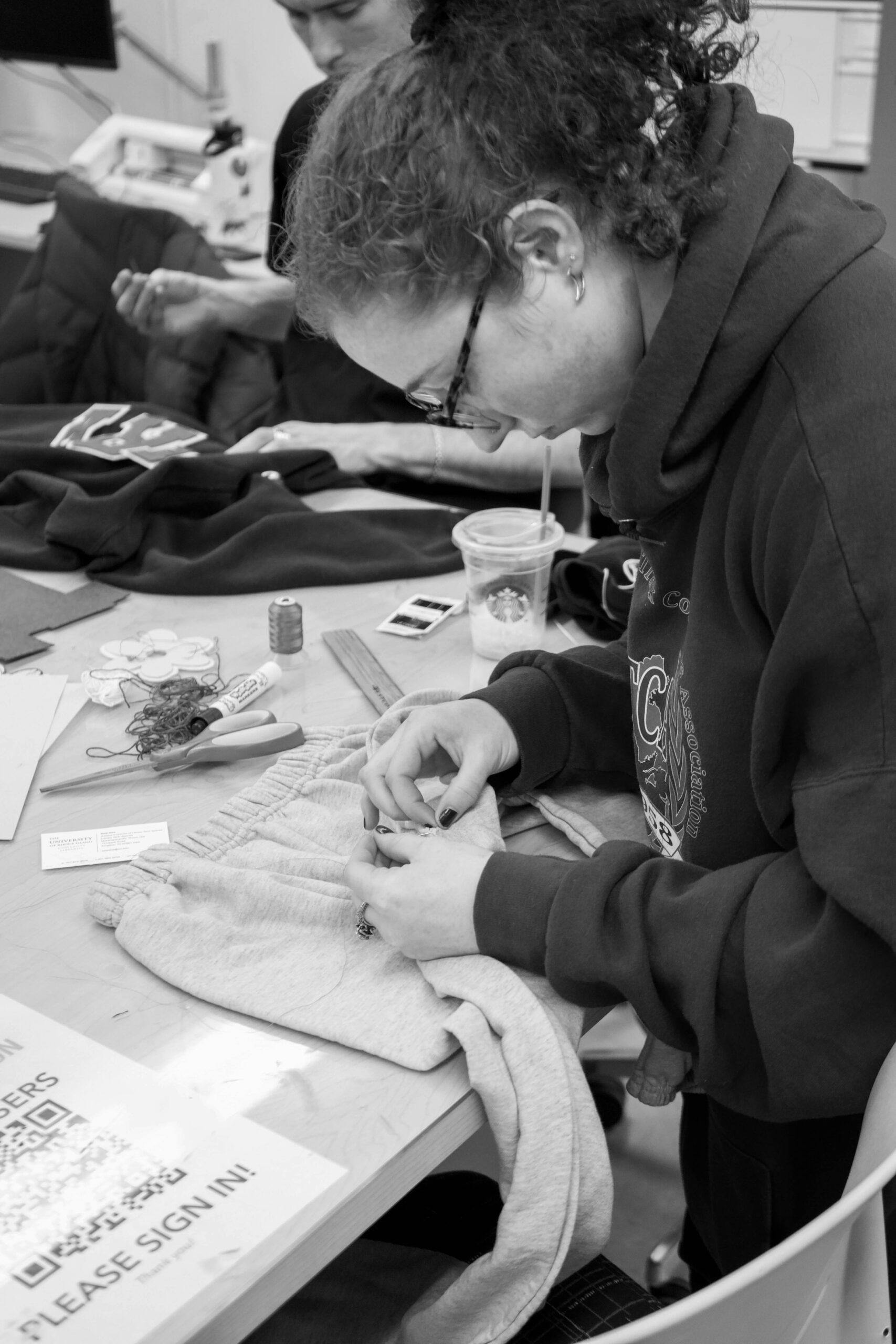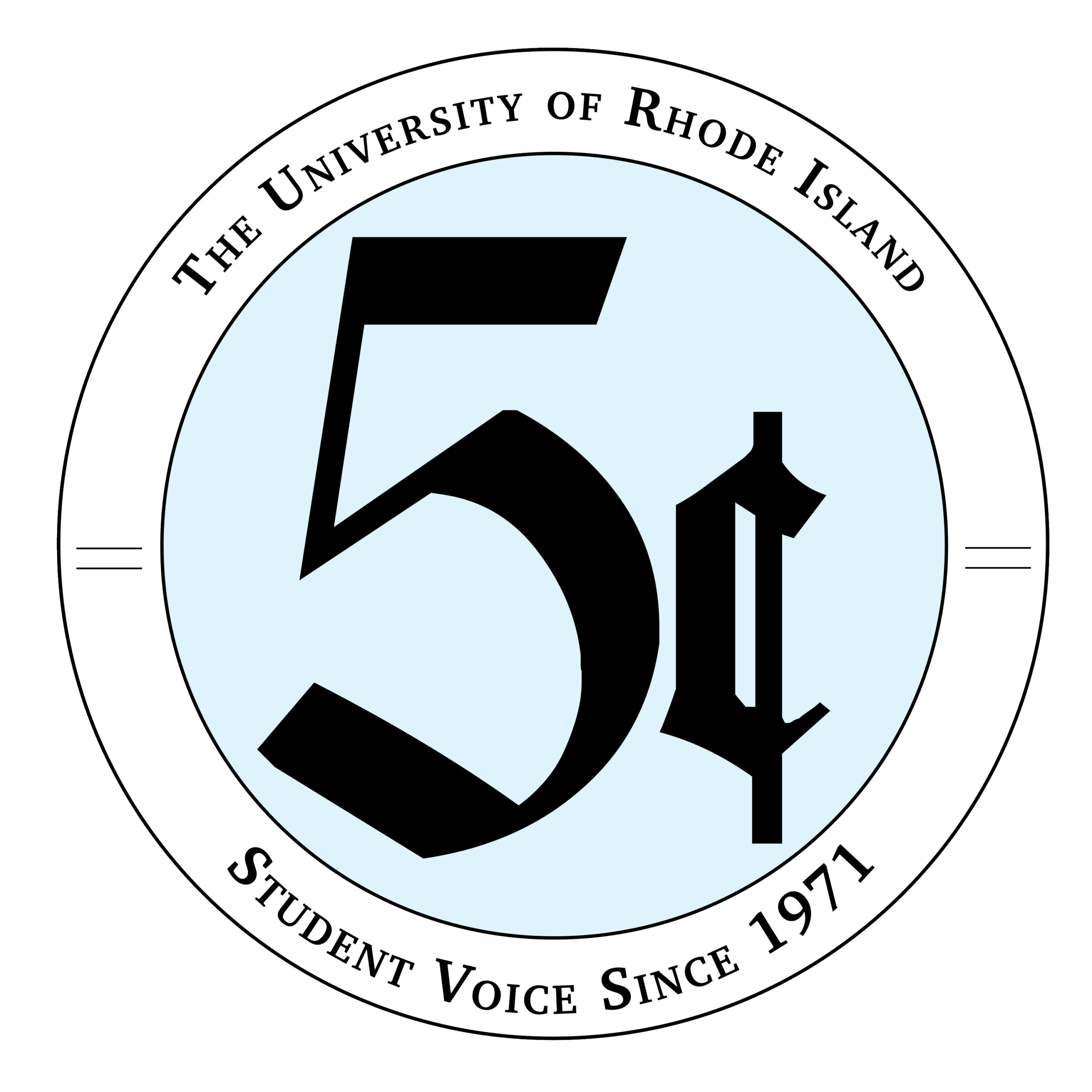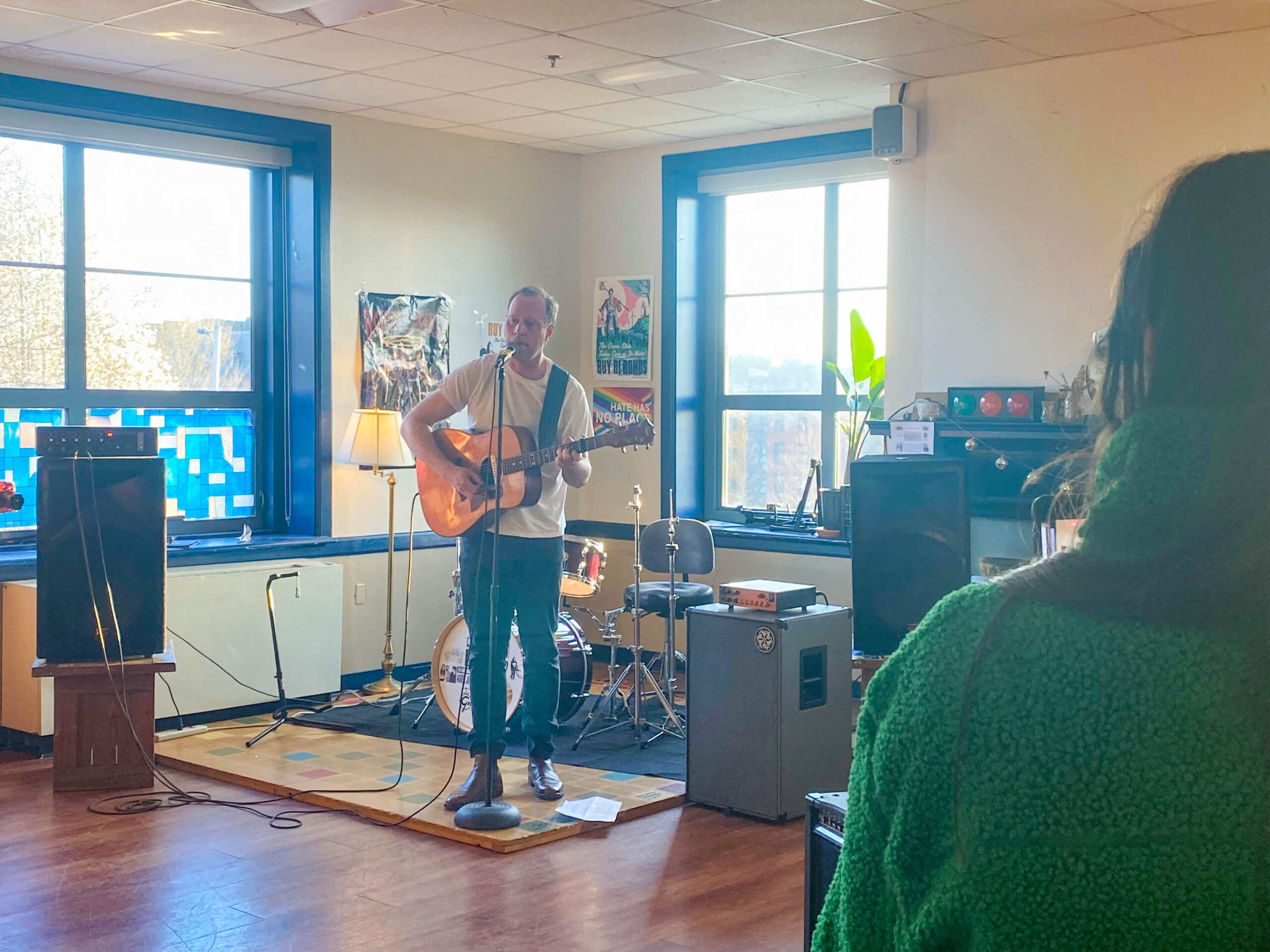Smiles and laughter filled the Robert L. Carothers Library on Feb. 11 as students gathered in the MakerSpace to sip on hot yerba-mate, patch up old clothes and craft creative projects from needle and thread.
Students learned the fading skills of sewing, mending and upcycling clothes in a Students for Sustainability event, according to fourth-year SAS Vice President Kiersten Sundell.
“The problem that we see all over college campuses, and just all of our society, is that when people have clothes that break, they throw them away,” Sundell said.
The event was an opportunity for University of Rhode Island students, including SAS member and fourth-year student Nick Powers, to learn how to fix clothes they would normally throw away.
“I wanted to learn how to sew because I have a whole bunch of clothes that I always tend to just stop wearing when I get a hole in them,” Powers said. “This gave me an opportunity to fix a pair of jeans that I knew I had that were broken and bring some of my tea that I wanted people to try.”
Students with previous experience sewing also joined, including second-year student Dami Oremosu, who turned an old pair of jeans into an over-the-shoulder bag.
Oremosu has had sewing as a hobby ever since his grandmother introduced it to him, he said.
“I think [the event] is really important; it helps a lot of students take a break when it comes to studying,” Oremosu said. “It’s a good mental break.”
SAS held its first Sip N’ Sew in November 2024, which received positive feedback, according to Sundell. This inclined the club to host the event again.
“A lot of people, college kids, especially, don’t have the skills to mend their clothes, and they don’t know how to make something new out of a clothing item that they already have,” Sundell said. “We’re creating a space here that teaches students who want to learn to sew how to do so.”
The event also provided a thrifting opportunity to bring sustainable clothing exchanges right to campus.
SAS is trying to start a thrift program that will be more long term, according to Sundell. They’re hosting events such as Sip N’ Sew so that students don’t have to drive to the nearest thrift store.
The thrifting aspect of the event served as an avenue for creativity, allowing students such as second-year Nicolo DeCarvalho, to take used clothes and upcycle them into new creations.
After finding a blank sweatshirt, DeCarvalho said he spent most of his time working on trying to embroider roses onto the fabric.
“It was a very welcoming environment,” DeCarvalho said. “It was loud and rowdy, but I like having background noise, so it was good.”
The inspiration for the thrifting collective came from an event last Earth Day where SAS held a pop-up thrift store that ended up being a huge success, according to SAS president Dylan Murdock.
“We started getting the initial inclinations that this is something students wanted,” Murdock said. “This should be something we should be able to provide to students as a year-round service.”
The overarching hope is that URI students were able to understand how to build sustainable habits in a comfortable environment.
“Sustainability is all about that long-term commitment to being more environmentally friendly to the planet, but that also means that you have to learn the skills to pay the bills,” Murdock said.
SAS wants to teach students sustainability skills and give them a platform to do it freely, according to Murdock. They are hoping to be the stepping stone that allows thrifting efforts at URI to expand.
“We’re trying to contribute in a very small way to the culture shift here,” Sundell said. “It’s ok to fix your clothes and find new ones from 2015, in fact, we encourage that.”




